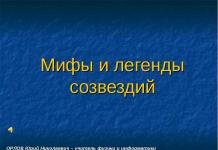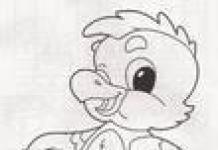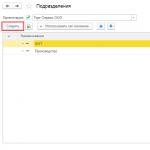extract living meaning from a dead letter"
K.D. Ushinsky
Confident reading skills are one of the main conditions for children’s success in learning. However, at the moment, reading skills in schoolchildren are causing serious concern among teachers and parents.
The vast majority of difficulties that children experience while studying at school are due to the fact that they cannot independently obtain information from books and textbooks.
Modern children not only do not like, but also do not know how to read, and reading is not only a subject that a student needs to successfully master, but also one through which he will master other disciplines, learn about the richness of the surrounding world and human relationships, and form one's own attitude to reality.
Reading is work. Our task is to make it more efficient and productive.
Skill fluent, conscious and expressive reading laid down in primary school.
How to help children cope with difficulties in learning to read?
Often they try to solve this problem simply and ingeniously: you need to read more. “And the child sits over the book, shedding tears and feeling quiet hatred for it.”
However, the answer to this question is not so simple. Before forcing your child to read more, you need to find out what the underlying causes of the difficulties are. And only after finding out this will we understand what help we need to provide him. There are many reasons for difficulties, and accordingly, there are different ways to help.
Reading is a complex act that includes:
1. Technical skills - correct and quick perception and pronunciation of words, based on the connection between visual images, on the one hand, and acoustic and speech motor images, on the other.
2. The process of understanding the meaning of what is read - extracting meaning and content.
These two sides are closely interconnected and mutually influence each other. Perfect technology leads to a quick and accurate understanding of the meaning, and text that is easier in terms of meaning is read faster and without errors.
Reading technique refers to the ability to recognize written letters, correctly associate them with sounds and pronounce them in the specified order in the form of syllables, words and sentences.
(T. G. Egorov).
In the process of learning to read, schoolchildren practice both reading technique and reading comprehension. However, the importance of building and automating technical skills is often underestimated, and the main emphasis often shifts to semantic reading at the expense of technology. In a hurry to switch the child to work with the meaning of what he read, we disrupt the natural psychological process of reading formation and create conditions for the appearance of errors.
There are reasons that slow down reading speed:
Natural pace of activity
Usually, parents themselves notice that the child is slow, and if the pace of classes is high, he does not have time and gets tired easily. All these observations indicate that the natural pace of a child’s activity is low. And this is not the child’s fault.
The pace of activity is the speed at which mental processes work: memory, attention, perception, thinking, imagination. This is the number of operations, actions, movements that a person performs per unit of time. The pace of activity, being innate, determines how quickly a person works, remembers, considers, imagines, thinks about solving a problem and, of course, reads. But, although the pace of activity is an innate stable property of the nervous system, it can gradually change throughout life, being involved in a wide variety of activities.
This means that by using certain exercises you can increase your reading pace.
Such exercises could be:
1. Repeated reading
You read the text out loud. The child then reads the same story for one minute. Having finished reading, the child marks the place in the text to which he managed to read. Then the same text is read again, and again after a minute the child notes the number of words read. Naturally, the second time I manage to read more. Let the child repeat the reading 4-5 times (or until the number of words stops increasing).
2. Lightning
The exercise consists of alternating reading in a comfortable mode with reading at the fastest possible pace. The transition to reading in accelerated mode is carried out using the “Lightning” command.
3. Tug
You read the text aloud, varying your reading speed from 80 to 160 words per minute. The child reads the same text to himself, trying to keep up with you. Stop at a word and ask your child to point out the stop in the text. If your reading speed is significantly higher than your child's reading speed, reduce it. It is important that the gap does not exceed 20 words per minute, i.e., if the child’s reading rate is 20-25 words, then your reading rate should not be higher than 40-45 words per minute.
Regressions
Regressions are recurrent eye movements for the purpose of re-reading what has already been read. This drawback is the most common. Some readers, unnoticed by themselves, read any text twice - both easy and difficult. When reading a text with regressions, the eyes move backward, although there is no need for this.
Reasons for Regressions
1. The power of habit.
This is the most common reason. Its roots lie in the way a child was taught to read. Very often, without noticing it ourselves, we form this habit in a child. At the first stages, when the child is just mastering the syllable-by-syllable method of reading and it is still difficult for him to grasp the meaning of the word read from the first reading, we ask him to read the word again and again until the meaning of what he read becomes clear. However, some children do not read the word again, but only pronounce what they read, getting used to this method of comprehension.
Or another option, when parents are in too much of a hurry and want the child to start reading whole words as quickly as possible, while the child is not yet ready for a new way of reading and gets used to first reading to himself syllable by syllable (it’s difficult to read differently the first time ), and then reads (pronounces) the whole word out loud. Both form the habit of regression. In addition, the latter option contributes to the formation of the habit in the future of always re-reading long and difficult to spell words.
2. Apparent difficulties of the text.
If the reason for the regressions is that the text is difficult for the child to understand, then in this case, invite him to read the text without regressions, even if certain parts of the text are incomprehensible. Often further reading will clear up possible questions and make returns unnecessary.
3. Lack of attention.
If the cause of regressions is poor concentration, then you need to stop reading. Perhaps the child is tired (ask him about it) or something is bothering him and this is preventing him from concentrating. Give your child time to rest. Additionally, you can use some exercises to help you concentrate.
Regression Elimination
The last two reasons are temporary phenomena and can be easily removed. Their effect on reading speed is not particularly significant. While the first reason - the force of habit (like all human habits) - is a fairly stable phenomenon, and regular training using a special exercise will be necessary to overcome it.
Exercise “Reading with a window.”
You take a sheet of paper measuring 10 by 5 cm. From the right edge of the rectangle, cut out a small hole - a “window”, equal in height to the width of the line, and in length corresponding to the size of a syllable of about 3-4 letters.

The piece of paper is placed on the line and moved first by the adult, and then by the child himself along the line. When the sheet moves along the line, the child’s gaze will move smoothly along with the sheet, and repeated reading will be excluded due to the fact that what has been read will be covered.
Gradually, the child will get used to glancing along the line when reading, without returning to re-read. In order to overcome the power of the habit of regression, it is necessary to form a new habit in which the gaze will correctly move along the line from left to right. Forming a new habit or relearning is a fairly lengthy process, because a habit is an automated action. Therefore, you need to use the “window” constantly when reading texts assigned for homework.
Regressions disrupt reading accuracy. But the methodology of teaching reading has a considerable supply of means that make it possible to minimize regressions and subordinate them to the semantic side of reading.
1. Reading pairs of words that differ in one letter:
goats - braids
grass - herbs
wind - evening
ran up - ran up
2. “Find the extra word”
(Quickly read and write words that differ by one letter)
Hat hat hats hat
Table pillar table table
Home home home com
Jackdaw stick stick stick
Paw paw paw linden
Got lost got hit
Teddy bear Teddy bear Bowl Teddy bear
STRAIGHT STRAIGHT STRAIGHT CROVE
3. Reading chains of words close to the graphic appearance:
aloud - deaf - hearing
vyut - vyun - blizzard
4. Reading chains of related words:
water - aquatic - underwater
forest - forest - forester - underbrush
5. Reading words in which phonemes paired in hardness and softness perform a semantic separating function:
eats - eats
jackdaw - pebble
corner - coal
6. Reading syllable by syllable and clarifying the meaning of difficult words before reading the entire text.
Once upon a time the elk spilled
Pu-te-six-to-travel
For - seams - rya - they threw
7. Reading words in which the minimum reading units were printed in different fonts:
ROCKED
SPLASHED
SHOUTED
Anticipation
Perhaps you have noticed while reading that many words that you read, you do not finish reading to the end, guessing what kind of word it is based on its content. This technique, used to further comprehend the text, is called anticipation, or anticipation, in another way - a semantic guess.
This is the mental process of orientation towards a foreseeable future. It is based on knowledge of the logic of events and significantly speeds up reading. Most experienced readers use this technique.
At the same time, if a child has not developed the ability to guess the meaning, he will need to read each word to the end each time in order to comprehend the phrase and understand the content of what he read.
Exercises aimed at developing anticipation skills
1. Reading with missing endings.
The kitten Vaska was sitting on the... near the chest of drawers and a lot of... flies. And on the como..., on the very edge, lying... is a hat. And then the cat Vasya... see... that one mu... sat on the hat.... He jumped up and grabbed the hat with his claws... I’ll slip my hat... off the como... Vaska fell off and flew to the floor! And the way... - bang! - and covered it from above.
And Volodya and Vadik were sitting in the room. They colored... the pictures and didn’t see... how the cat Vasya... fell under the hat.... They only heard... something plopped behind them and fell to the floor.
2. Finish the line.
Lo - lo - lo - like on the street... (light)
Ul - ul - ul - I broke... (chair)
Mom washed Mila with soap,
Mila didn’t... (like) soap.
3. Entertaining models.
E- (chalk, village, forest)
e - - (food, ate, ate)
e - - - (raccoon, riding, ruffs)
E - - (forests, village, sang)
4. Invisible words
I'm fat and big. WITH - - -
I am where the pain is. I - ah, I - oh! WITH - - -
The grasshoppers are ringing on me. WITH - - -
And I am the end result. AND - - -
(elephant, moan, haystack, result)
5. “Reading backwards” according to words.
What is written is read in such a way that the last word appears first, etc.
6. “Search for semantic absurdities.”
Children are offered a specially prepared text in which, along with ordinary, correct sentences, there are those that contain semantic errors that make the description absurd.
For example: “The children didn’t get wet in the rain because they hid under a telegraph pole.”
7. “Reading the text through the word.”
8. Reading using the “Grid”.
Training in reading texts begins with a grid. It is superimposed horizontally on the readable part of the page and gradually moves down. When you apply a grid over text, some areas of the text overlap.
Students, perceiving the elements of texts visible in the windows, must mentally fill in the sections of the line blocked by membranes, restoring the meaning.

Reading training with a grid lasts no more than 5 minutes and is replaced by reading without a grid for 2-3 minutes.
Articulation
The next reason that inhibits reading speed may be insufficient articulatory mobility of the speech apparatus, due to which the reading speed decreases: the articulatory apparatus does not make it possible to pronounce read words aloud at the required pace.
For the reading process, the pronunciation side of speech is extremely important: good diction, clear pronunciation of sounds, adherence to the rules of orthoepy - the pronunciation norms of a literary language, the ability to speak (and read!) expressively, loudly enough, control intonation and pauses.
1. Articulation of vowels, consonants, combinations of vowels and consonants.
These exercises develop the mobility of the speech apparatus.
AOUYIE, AYOUEI, OUAEEY...
(Change the sequence of vowels yourself, make sure your pronunciation is clear).
ssssssssssssssssssss...
S-Z-Z-SH, B-D-P-T, G-Z-K-SH...
Ba - bya bo - bee bu - bye bee - bee - bi
For - zy zo - ze zu - zy ze - ze zy - zi
Fa - fya fo - fe fu - fyu fy - fi fe - fe
La - la lo - le lu - lyu ly - li le - le
2. Reading tongue twisters.
The secret of a tongue twister is that it contains words that are similar in sound but different in meaning. Sounds and syllables are rhythmically repeated in words.
In the morning, sitting on a hillock,
Magpies learn tongue twisters.
Carrrr! Potatoes, cardboard, carriage, cap.
Carrrr! Cornice, caramel, toddler.
Sanya took the sleigh with him up the hill.
Sanya was driving down the hill, and Sanya was riding a sleigh.
Egor walked through the yard
Repairing a fence with an axe.
3. To develop correct pronunciation and improve reading skills, we use structural syllabic tables.

4. Sometimes reading fluency cannot be developed due to jerky reading.
In this case, you need to work on your reading fluency. To work on smooth reading, the following tables are used:

Improper breathing
To develop breathing and voice control skills, we suggest the following exercises:
"Blow out the candle"
Take a deep breath and exhale all the air at once. Blow out one large candle.
Imagine that there are three candles on your hand. Take a deep breath and exhale in three breaths. Blow out each candle.
Imagine that you have a birthday cake in front of you. There are many small candles on it. Take a deep breath and try to blow out as many small candles as possible, making the maximum number of short exhalations.
"Spray your laundry with water"(at one time, three, five)
Take a deep breath and simulate splashing water on your laundry.
"Holding Your Breath"
Children place strips of paper at lip level, take in more air and begin to exhale slowly so that the strip of paper does not move.
"In the flower shop"
Imagine that you came to a flower shop and smelled the delightful aroma of flowering plants. Take a noisy breath in through your nose and out through your mouth (2-3 times).
"Exhale with a count"
Take a deep breath, and count loudly as you exhale until you run out of air.
Using tongue twisters (in unison):
Like on a hill, on a hill
Cost 33 Egorki (deep breath)
One Yegorka, two Yegorkas... (and so on until you exhale completely).
It should be noted that after just a few classes there is enough air for a larger number of Yegoras.
"Bear Cubs"
Imagine that you are little cubs and ask momma bear for food. Words must be pronounced drawlingly, in a bass voice, clearly pronouncing [m].
Mom, I wish we could
Mom, could we have some milk?
"In the elevator"
Imagine that we are riding in an elevator and announcing the floors. The higher the floor, the higher the voice, and vice versa. We go first from first to ninth, and then down.
Small field of view
Field of view is a section of text that is clearly perceived by the eyes during one fixation.
A small field of view is a big drawback for many readers. Since children have a small field of vision, their eyes make a lot of fixations. It is necessary to expand the field of view so that the eye fixes not 1-3 letters, but a whole word or several words.
Exercises to help expand your field of vision
1. The “Pyramid” exercise is aimed at solving this problem.

Looking at the center at the dot and without moving your eyes horizontally, you must try to simultaneously see two syllables of one word. Go down to the next line, etc. Find the limit line that the child sees without moving his eyes. Start again from the first line, each time moving down one line. If it is difficult for a child, you can read the word syllable by syllable, and then, looking at the point, see this word at once.

Psychologists have convincingly proven that the size of the operational field from which information is collected depends on training. The Schulte digital tables, widely known among psychologists, significantly expand the field of view. But when working with them, the reader’s eyes move spasmodically. And to expand the field of vision, it is necessary to fix the eyes in one center.
By placing a green dot or question mark in the center, you can successfully use the tables in practice. When working with these tables, volitional effort is required. The gaze must be fixed on the green dot in the center of the table. The task is to see the entire table. The adult names the letter, the child must find it without taking his eyes off the center.

Reading the first and last syllables on a line.
Badger Nose (excerpt)
K. Paustovsky
… Che half an hour later the beast stuck out of the grass, wet black nose , By resembling a pig's snout, his nose sniffed the air for a long time and sting from greedy you…
"Word Pyramid"
We build a pyramid from the words of the work we are reading.
We read the words at different paces:







Reading “THROSS-SEARK”
Children place their hands on their knees and begin to read the text aloud at the command “Throw”. When the “Notch” command is heard, the children lift their heads from the book, close their eyes and rest for a few seconds, hands on their knees. On the command “Throw”, children must find with their eyes the place where they stopped and continue reading aloud.
Level of attention organization
“Attention is precisely the door through which everything passes,
what only enters a person’s soul from the outside world.”
K. D. Ushinsky
The role of attention in reading is as great as in other types of human activity. Very often the attention of a junior schoolchild is scattered, he cannot concentrate or concentrate.
Properties of attention




Exercise: Find words among the letters and underline them.
About the sun and the pillars
Movies
rpmachine
Exercise: Read a sentence in which all the words are written together. Divide the sentence into words.
TODAYLESS READINGS
WE WILL GET TO KNOW YOU
WORKS
KORNEYIVANOVICHACHUKOVSKY
Exercise: Compare two tables. Write down the letters from the right table in accordance with the sequence of numbers on the left. Explain the meaning of the proverb that you get if you answer correctly.
Fear has big eyes.

Exercise "Grid table"
Stage I Look at the table and find all the black numbers from 1 to 12



Attention span
This exercise is carried out collectively so that the child has someone to compete with.
At the “Attention” signal, show the card (see sample), but no more than 2 seconds. The child must read the material presented and write it down.
As you train, increase the volume of material.
Nonsense words containing from 3 to 9 consonants, for example:
K P T N S D
B M D R K L F
S T P C G V D K
M V P K Sh L H B S
Sentences Containing from 5 to 16 letters, for example:
Smoke is coming.
The yard is clean.
What to do?
Learning is light.
The bird is singing
Concentration of attention

Exercise: Try to rewrite the following lines without errors:
Ammadama Reberge Assamas
Hesklla essanessas
Enalsstade enadslat etaltarrs
Usogkata limmodorra clatimore
Correction tests allow you to determine and develop the volume and concentration of attention







Development of RAM
The development of reading technology is hampered by underdeveloped RAM.
What does it mean?
You can often see this picture. The child reads a sentence consisting of 6-8 words. Having read to the third or fourth word, I forgot the first word. Therefore, he cannot connect all the words together. In this case, it is necessary to work on RAM.
This is done using visual dictations.
Each of the 18 dictations has six sentences. Their peculiarity is this: if the first sentence contains only two words - “The snow is melting” and 8 letters, then the last sentence of the eighteenth set already consists of 46 letters. The length of the sentence increases gradually, one to two letters at a time. The working time for all sets is approximately 2 months.
What is the best way to conduct visual dictations?
Write out six sentences from one of the sets and cover them with a sheet of paper. After one of the offers is highlighted, i.e. the sheet of paper is moved down, the child reads this sentence silently for a certain time (the time is indicated for each sentence) and tries to remember. After time has passed, the sentence is erased and you are asked to write it down in your notebook.
This is followed by exposure, reading, and memorization of the second sentence. After it has been erased, you should write it down again in your student notebooks.
Six sentences usually take between 5 and 8 minutes.
So, on average, one set takes three days. Eighteen sets - 54 days, about two months. In two months you can develop operative memory, but on the condition that visual dictations must be written daily; if you write intermittently, this no longer gives anything.
Examples of sentence sets (Fedorenko's dictations)
1. Potatoes, beets, carrots, and onions are grown in the fields.
2. Every day thousands of people move into new apartments
4. A group of tourists is walking along an overgrown forest path.
5. The boy went to the window and saw a house under construction behind the grove.
6. Russia lives in peace and friendship with other nations.
Development of RAM
A type of visual dictation is the following exercise:
Sentence on the board: Natasha gave Sveta one wafer.
Read and remember the sentence.
Insert the first letters of all words in order into the table.
Using this system of exercises in practice helps to improve reading technique:
The volume of visual and auditory perceptions, as well as the angle of vision, has increased;
The skill of anticipation has been developed;
Stability of attention has been formed;
There are no regressions;
Increased vocabulary;
The articulatory apparatus is developed.
The development of reading technique affects:
General development of speech - students use more common sentences, epithets, comparisons in their speech;
Improving the quality of academic performance;
Maintaining high-quality academic performance during the transition to the second level.
The presented exercises will help eliminate the causes of difficulties and improve the technical component of the reading process, and therefore will help your schoolchild in learning in general. Get acquainted with the sections gradually, study regularly and with interest, and read with enthusiasm, with the whole family.
I wish you success!
Exercises to develop reading technique
*** Reading with a bookmark. The bookmark moves on the line being read, covering the already read syllable to the left of the student. This eliminates repetition and speeds up reading.
1. Reading silently with sound interference(to suppress articulation. Then retell the text or answer questions): there is a cap in the mouth, music is playing or the child is tapping a rhythm (kids simply tap rhythmically, or the teacher taps for them, older adults tap out a complex rhythm)
2. Reading aloud with articulation(tongue twisters, intonation, expression).
3. Reading in chorus(with correction of errors, do not mumble) - children catch up with each other, catch up, and those in a hurry do not fuss, read with everyone.
4. Reading buzzing:
a) everyone reads at their own pace, but not in full voice;
b) everyone reads to themselves, but buzzes out loud like an insect.
V) "Canon".One child begins to read the text, the other reads the same, but is 3-4 words behind the first (as when singing a canon).
5. Reading at the pace of a tongue twister(any text. You can start with one sentence and gradually increase the volume of text by one breath).
6. Reading in a chain(one word, sentence, paragraph at a time. Changing the reader by sign: clapping, calling a name - this is better for concentration, because they don’t know who’s next).
7. Circular reading. A short text is read one word at a time, one after another, several times (in order, then the text needs to be retold).
8. Dynamic reading. A column of 5-7 words is written on a board or card with a gradual increase in the number of letters in the words (“herringbone” for increasing see Zotov, later you can also decrease) - they teach you to switch from short to long, to see words in their entirety. Read in chorus / one at a time, change on command.
9. Binary reading(one text is read by two students at the same time) - holds attention, unites children, unites.
10. "Queue" = "Echo"(the teacher reads first, then the students read the same text at the same pace, with the same intonation) - start with columns, then sentences and texts.
11. "Tow"(pairs teacher + student, best for progress )
a) the teacher reads aloud, changing the reading speed. Students read aloud, trying to keep up with the teacher;
b) the teacher reads aloud, the children silently. The teacher stops, the students show the word where the teacher stopped.
12. "Trap". A teacher or a well-read student reads a familiar text and replaces some words with synonyms. Students are looking for this replacement. When children lead, this is meaningful reading.
13. "Head and Tail". The teacher or student begins to read a sentence in a familiar text, the children quickly find it and finish reading it all together (scanning, quick reading to themselves, understanding). You can take columns of words.
14. "Jumping". Read aloud through the word, then tell what the text was about.
15. "First and last". Reading aloud the first and last letter in a word; the first and last words in a sentence, and then naming the entire word / retelling the sentence.
16. "Hide and Seek". Finding a word in the text with a certain feature (starts with the letter a; consists of two syllables; with stress on the last syllable; it contains X vowels and Y consonants, etc.).
17. "Who is faster?" Short sentences are written on the board or cards, texts (about 3-5 pieces) are on the table. At a signal, students look for these sentences in the texts.
18. "Photo Eye":
a) on the board there is a column of words that students read for a certain time. The words are closed, the children name the words they read from memory;
b) the teacher shows a frame of the filmstrip, the children must remember the caption to it.
19. "Find me". Lines of letters are written on the sheets, and whole words are “hidden” between the letters. They need to be found.
20. "Guess": anticipation of words, sentences, proverbs (explain the meaning of unclear words from the text in your own words); or reading text through the grille.
21. "Scanning". In 20-30 seconds, students “scan” the text with their eyes in search of important information (for example, they are looking for the answer to a question: the name of the main character, age - they are looking for supporting words). Variations for this exercise:
A) "Sprint". Students read an unfamiliar text to themselves at their maximum speed, clenching their lips and teeth tightly, and after reading they answer the questions formulated before reading. This exercise is carried out before reading each text aloud.
b) "Reading-Intelligence" It is used to teach children vertical reading. Children scan the text at their maximum speed and find answers to questions. This is how children learn to find the main thing in a text. In Russian language lessons, you can offer to play scouts, i.e. find vocabulary words or words for some rule in the text.
22. "Counting Words". At maximum speed, children read the text and count words at the same time. Before reading, students are asked a question that they must answer after finishing the work.
23. Reading words written down in different font sizes.
Vacuum Cleaner Snegiri
SPARROWS
24. "Tails". Reading only the second half of words. This exercise leads to a sharp reduction in errors, when only the beginning of a word is read correctly, and its end is either guessed at or read with distortions. (Task: Read the text, saying out loud only the underlined part of the word).
25. "Enchanted Word". The first word is read normally, the second (or underlined) is read from right to left. This exercise develops the ability of the perceptual and speech motor systems to work with the simultaneous functioning of two opposite attitudes (to familiar, familiar images and to new ones) and to flexibly move from one to the other. Every second word is emphasized first, then the words that carry the main semantic load.
Exercises to develop expressive reading skills
1. Articulation: vowels and consonants, syllables of various types
(see Zotov BA - YOU - GO; YTS - USH - EAT; cat - fyts - roar - smoke).
2. Reading tongue twisters (several different ones on one exhale or one several times).
3. Reading difficult to pronounce words (democracy, excavator, escalator).
4. "Endings". Increased requirement for clarity of word endings. The exercise lasts no more than 30 seconds (we read them louder than the rest of the word, or the entire word to ourselves, and the ending out loud).
6. Selective reading of interrogative and exclamatory sentences from the text.
7. Reading one sentence with different intonation. (You can read the text with a question or exclamation intonation).
8. “In one breath.” Take a deep breath, read the sentence from beginning to end, then try to read as much as possible on one exhale.
9. "Echo" The teacher reads 1-2 lines of the poem, text, and the students repeat it with the same intonation. Let the children come up with intonation, and everyone repeats.
10. Marking the text: pauses, logical stress, strengthening and weakening of the voice - children mark with /, | and so on.
11. "Acceleration". One sentence is repeated several times, gradually increasing the tempo and strength of the voice, articulating more and more clearly.
12. Reading-singing. The motive of a familiar song is chosen and the text of a poem or short story is sung.
14. Reading with the mood. One student reads the text, the others must guess its mood.
15. “Reading by roles.” The child chooses a hero for himself, selects his voice, timbre, intonation (develops speech, removes internal barriers, because the hero reads, not me)
17. Staging - blindly choose a mask, props, enter the role (relieves embarrassment and fear. You can arrange a puppet theater).
19. Reading competition. Students prepare independently (such as a concert, choosing a piece independently, the jury is made up of children).
20. Narrator's reading.
a) The text is divided into parts, each “speaker” prepares in advance to show a reading sample. The teacher works with each “speaker”.
b) The text is written on a roll of wallpaper, which two assistants roll up. The announcer reads without giving the impression that he is reading, as he is telling, with expression.
Exercises to develop reading skills for primary school children
The main goal of these exercises is to improve reading skills, since poor reading technique invariably affects reading comprehension.For a beginning reader, understanding a word read often does not come along with reading, but after it, when he traces the entire letter sequence.
Gradually the eye gets the opportunity to run forward and understanding occurs along with reading. We list the most significant exercises in this set:
1. Read columns and lines of words in whole words in a circle, repeating after each all the previous words as quickly as possible. FOR EXAMPLE: HOUSE, HOUSE - TOOTH, HOUSE - TOOTH - NOSE, HOUSE - TOOTH - NOSE - FOREST, HOUSE - TOOTH - NOSE - FOREST - CHEESE,...
2. Read function words as one word with the word to which they relate. For example: in the forest, along the river; and said.
3. Read the tongue twister many times from beginning to end “ round" gradually increasing the reading speed, showing the word being read with your finger. Have a competition using seconds.
4. Choose 2-3 sentences, read the first word, and then, quickly repeating the first word again, read the second; Having repeated the first two, read the third and so on until the end. FOR EXAMPLE: “XIE LI”. "SELLING GEESE." “GEESE SAT ON THE WAVE.” “GEESE SAT ON THE WAVE IN THE EVENING” Try to read the previous words faster each time, when you reach the end of the sentence, read it again.
5. Do exercises on placing logical stress (highlighting the most important words in your voice. Read, placing logical stress in the question and answer:
Is this the cat Maruska?This is the cat Maruska.
Is this the cat Maruska? This is the cat Maruska.
Is this the cat Maruska? This is the cat Maruska.
6. Do exercises to regulate the pace of reading.
Reading pace: SLOWLY, but in whole words, smoothly. AVERAGE - reading standard with all the rules of expressiveness. FAST is a tongue twister.
7. Reading passages at different paces.
a) Reading, with a change in the strength of the voice: QUIET - NORMAL - LOUD; LOUD - QUIET - NORMAL;
8. Read just forward, without repeating what you read. When reading a sentence, try to remember similar pictures and try to convey your attitude towards what you read.
9. Choose 2-3 sentences and read them in turn with an adult, recording the time:
Adult: 23 sec, 21 sec, 19 sec, 17 sec.
Child: 1 min.16 sec, 1 min., 50 sec., 46 sec.
Next, specific tasks are proposed according to the type of which each teacher can create similar. The purpose of these exercises is to improve the technical success of reading of a primary school student without violence, based on the development of interest in this type of activity.
1. . Find words in each column that differ by one letter. Connect them with an arrow.
WASP poppy
cat mustache
Mouth whale
cancer horn
2.Tell me how they are similar and how they are different.
TREE and BUSH, PEN and PENCIL, BRIEFCASE and BAG
3.K pronounce each subsequent syllable louder, then quieter:
Ra-ru-ry-ri-re-re. for-zu-zy-zi-za-zya
4. Correct mistakes.
It hits like a fish hitting honey.
A lazy person and a scoundrel are two native gates.
5.Read the sentences with question and answer intonation.
in autumn rooks fly south. in autumn rooks fly south. Rooks in autumn fly away South. In autumn the rooks fly away South.
6.Read and write the names of the birds. For this
you need to rearrange the syllables.
NITSASI ROKASO VEYLOSO LINFI
Read the words in columns and lines “in a circle”
Whale | and the whale | hamsters |
cat | at the cat's | seals |
hare beaver | grow on a beaver | moths crickets |
walrus | at the walrus | tigers |
mole | let go | lions |
fox | and the fox | mice |
Change all the words in the first column according to the model fox - fox.
Change all the words in the third column according to the model; foxes - fox
7. Read the tongue twister, read one word at a time.
The wasp does not have whiskers, not whiskers, but antennae.
8.Read, chanting one word at a time. Where will you pause and take a breath?
The bear picks more than one berry at a time, but sucks the entire bush.
9.Read the sentence with intonation: surprised criticism, condemnation, indignation.
What a greedy bear you are!
10.Read: first quietly, and finish reading very loudly; start very loudly and finish very quietly.
Look, if you overeat, your stomach will hurt.
11. What do they look like in your opinion? Connect the words with arrows.
Wolf careful, cunning.
The fox is angry and greedy.
Hare thrifty, timid.
12. Place the mixed up syllables correctly:
breath-breathe
dot-ki-lis
goals
13. Find and write five words that are hidden in these syllables:
Li-sa-dy-ra-ki-you
la-pa-ra-no-sha-lun
14.Find a name on each line and write it next to it.
FYVAIVANGOR _________
SASHAITEUBLT _____________
ONMAKNGTANYA _________________
15.Read the sentences. Watch your inhalation and exhalation.
There was a thunderstorm (inhale) and thunder. There was a thunderstorm and thunder, (exhale). Sasha couldn’t hear (inhale) whether the storm had passed.
Why are whales silent? Do not say anything.
Why are whales silent? Do not say anything.
Why are whales silent? Do not say anything.
17. Read the sentence with intonations: surprise, doubt, joy.
"It's nice in the forest in autumn!"
17.a) Accompany the phrase: “I am very happy” with various gestures:
Extend your hand joyfully in greeting,
Pull your hand away in fear
Threaten your finger angrily
Shrug your shoulders indifferently
Call slyly to yourself.
18.Read the words in order of increasing action:
passed, passed, ran
19.Match the proverbs on the left side with the half on the right.
Learning is light, but one is guided by the mind
They meet you by their clothes, and there will be no boredom
Don’t sit idly by, ignorance is darkness
20. Correct the mistake.
A horn to the ears - even sewn strings.
21.Read the tongue twister “in a circle”, increasing the speed.
Our Polkan fell into a trap.
22. Read the sentences, distributing your breathing correctly.
(inhale) And his house has no stove (inhale) - \just a doghouse, (inhale) \and there is straw laid down there, (inhale) \and he is not cold.
23.Which syllable must be added to form words? Write these words.
Miss___ rep___ mass____ bowls___ lies_____
24. The names of animals were hidden among the letters. Find and underline.
FYVAPRENOTM
YACHBEAR
EZDVORONAPA
KENROMICE
Use "/" pauses.
The fox drags the children a mouse, a bird, or a hare. Sits aside and watches like fox cubs catch prey learn to catch.
26. For these words, choose words with the opposite meaning.
Deep-? Long-?
Clean - ? Sad-?
Will he sit down?
27.Read prepositions with words as one word.
Fishing from water to riveron the shore behind the float
28. Correct mistakes.
In the absence of fish, the tank is fish.
Fashion does not flow under a lying stone.
Buy a whale in a bag.
29. In what order can these words be put?
Stream, puddle, pond, river, sea, ocean, lake
30. Read the words and find among them those that can be read backwards.
RIVER, COSSACK, BAG,
BACKPACK, HUT, BIRCH.
31.Answer. Who's flying? Running? Floats?
Magpie, dog, sparrow, pike, hare, bream, crow, stork, seal, bullfinch, crane, bee, giraffe, mouse, perch, wolf, tit, shark.
32. Cross out the letters that are repeated twice. What is written?
TUIGYUFRZHYADYSHCHMYKBEMZ VYAZLCHAEEDSOPKAZHEBOUSHP
33. Buratino underlined the letters as in the example: A and B. Find the mistakes.
Y Ts U A K E N A N G Sh B Sh Shch D F H Ъ F A Y V A P E R O L E D J E A Y H S E B I A T B Y Y C B
Irina Yurievna Molokova
Exercises to develop and improve correct and conscious reading skills in children
Exercises in the Russian language for students with disabilities in primary school, aimed at developing and improving the skills of correct and conscious reading.
Reading is a purposeful speech activity that provides a person with knowledge, organizes it, recreates experience, stimulates intellectual development, influences behavior, can change and improve personality; it is through reading that a person learns about the world around him. Reading has its own functions: educational, educational, communicative, aesthetic. That is why it is so important to instill in a child an interest in reading. Students with disabilities experience particular difficulties in learning, in particular when learning the Russian language and reading. Difficulties in students understanding the meaning of what they read impede reading fluency and accuracy and create deficiencies in reading technique (a large number of errors, low pace). Reading instruction for students in elementary grades is conducted in accordance with programs that take into account their psychophysical characteristics and is aimed at correcting and compensating for developmental disorders that students have. It is known that successful mastery of all academic subjects is possible only with a good language base. And the quality of reading plays a paramount role here.
The set of exercises includes:
1. Exercises to teach proper breathing, articulation, pronunciation and pronunciation of sounds, syllables, words, expressions
2. Exercises to develop attention.
3. Exercise to develop reading speed.
4. Exercises to develop “Reading Correctness”.
5. Exercises for meaningfulness (consciousness) of reading.
“We are breathing!” Breathe and pronounce all vowel sounds.
“Let’s stretch our tongue!”
exercises to develop clarity of pronunciation:
Planes take off: ooh-ooh.
The cars are moving: w-w-w.
The horses galloped: clop-clop-clop.
A snake crawls nearby: shhhh.
A fly hits the glass: s-z-z-z.
“Say it right!”
reading quietly and moderately:
Arch of Arts
arta arda
arla archa
Arsa Arja
reading loudly and quickly:
burn - steam - fry
door - beast - worm
“Learning to speak quickly!”
Thirty-three striped
Thirty-three piglets' tails are hanging.
Like on a hill, on a hill. There are thirty-three Egorkas.
Once Yegorka. Two Egorkas...
We read the chain of syllables:
lo ba zhu nya
Zha sinya ki
Training in the clarity of pronunciation of paired consonants by voicedness - deafness:
V H G G B D
F S W K P T
How many words are hidden?
Wolfcatopenedboxwindownight
ruklebusjoyufrknp
suncenter
chklernopttelevision
shshgtskpstulrseamtojko
“Find the animal”
hidden among the lines of the poem:
The pump sucks the river water,
And the hose will be extended to the garden.
Peace floats among the bushes,
It's good to wander here alone.
Reading to rhythm
Mouse Fork
Brand Mink
Hot Bunny
Heron Cup
Pine Branch
Thread Pumpkin
Tables with fixation of vision on the midline
(a series of numbers).
Unscramble the words:
MASHIKAN TKVYA OGETSUR
roDoga CHOKSUNDU ZINAKOR
Read as quickly as possible:
1. One day a man went into the forest.
2. One day a man went into the forest to chop wood.
3. One day a man went into the forest to chop wood and came to the lake.
4. One day a man went into the forest to chop wood, came to the lake, and sat down on the shore.
5. One day a man went into the forest to chop wood, came to the lake, sat down on the shore and accidentally dropped the ax into the water.
Read the text aloud, starting with the last word of each sentence.
Sun and wind.
The wind and the sun argued between the wind and the sun before anyone can undress a man. The man's dress began to blow away in the wind. Only the whole person wraps himself up and pulls his hat tighter, but he opens his dress and tears his hat. The wind has not divided a person like that.
The sun has risen. He moved his hat, the man opened his eyes - it was just hot. The man undressed completely and the sun was still hot.
L. N. Tolstoy
Read the text aloud, reading the words backwards - from right to left.
zaR elsop yajod olunyalgyv okshynlos, and ysalivyaop yaantevtsimes
agud-agudar. otK in tenyalgzv an ugudar, kasv yuye yasteubul.
ysalidrogaZ agudar, hell and alats yatilavkh,
desperately ano eevisark ogomas acnlos. okshynlos and tirovog: “yt avisark
Ote advarp, he dev zeb yanem and igudar en teavyb.” A agudar
oklot yasteems hell eschup yastilavkh. adgoT okshynlos solidressar
and solatyarps az learn - and igudar as in olavyb.
K. D. Ushinsky
Correct the text.
In the summer Masha lived in the village.
In a letter to his friend Olya, he once said: “There is a garden near our village. There are a lot of mushrooms and berries there.”
Find errors, correct them, read them correctly
(editing)
People honor the one who loves the pond.
The body of the worker in his hands begins to swell.
Without a pond you can't get a fish out of labor.
Those who are used to working cannot sit without chalk.
Read the sentence with different intonations:
surprise, doubt, joy.
It's nice in the forest in spring!
Are you going to the theater today?
Are you going to the theater today?
Are you going to the theater today?
Are you going to the theater today?
Read the poem “They were scared of the hare,” highlighting the underlined words with your voice.
Scared of the hare
We went mushroom hunting
They were scared of the hare.
Buried behind the oak trees,
All the mushrooms were lost.
And then they laughed -
They were scared of the hare.
Read the poem, combining the pace of reading and the strength of sound:
slow – loud, medium – normal, fast – quiet.
Publications on the topic:
Consultation “Formation of reading skills in children with developmental disabilities” Prevention of reading disorders is one of the most important tasks of a correctional school. It is now generally accepted that between underdevelopment.
Formation of socialization skills in children with disabilities in preschool settings Formation of socialization skills in children with disabilities in preschool educational institutions System of work on the formation of socialization skills in preschool children.
Formation of a conscious attitude towards their health in preschool children The statement that health is the basis of a long, happy life is beyond doubt. But life experience shows everyone.
FORMATION OF SPEECH SKILLS IN CHILDREN 2 – 3 YEARS OLD The age of 2 – 3 years in Russian psychology is called an early age. The most important mental ones.
In our country, as well as throughout the world, the number of road accidents is increasing: according to statistics, every tenth victim of an accident.
Hello, friends! What are you complaining about? Is your child's reading technique poor? Okay, we'll treat you. Keep the recipe. I am prescribing special exercises for you to develop your reading technique. Take regularly, several times a day. And the reading technique will firmly stand on its feet, and then leap forward.
Such magical exercises really exist. And if you try, you can find hundreds of different techniques, approaches, and methods on the Internet. To be honest, my eyes widen, and my brain begins to slowly boil. You don't know what to choose.

In order to protect my readers from such problems, I allowed myself to make the choice myself. The article included only the most interesting and tasty, in my opinion, exercises that will undoubtedly help raise reading technique to the level envisaged. I do not claim their authorship; they were developed by professionals: teachers, psychologists, professors.
But I claim to be the author of their names. They are too boring in the original version. Agree, “The Mystery of the Missing Sentence” sounds much more fun than “Visual Dictation by Professor I.T. Fedorenko." And it will certainly arouse greater interest among younger students.
Lesson plan:
List of exercises

And here he is! List of special reading exercises:
- "Half a watermelon"
- "Lost Letters"
- "Very sharp eye"
- "Sherlock"
- "Through the Looking Glass"
- "Mad Book"
- "The Birds Have Arrived"
- "Partisan"
- “Oh, once! Again!"
- "The Mystery of the Missing Proposal"
Exercise 1. “Half a watermelon”

Ask your child if, after seeing half a watermelon, he can imagine what a whole watermelon looks like? Of course, the answer will be yes. Now suggest conducting the same experiment with words.
Take a book and an opaque ruler. Cover one line in the book with a ruler so that only the top of the words is visible. Task: read the text, seeing only the tops of the letters.
Move the ruler higher and show only the bottom of the words. Let's read. This, by the way, is already more difficult.
For very young schoolchildren, you can offer another version of the game. Make cards with simple words. And then cut these cards into two halves along the words. You need to connect the two halves correctly.

How is it useful? Aimed at developing anticipation. Anticipation is foreknowledge. This ability of the brain, which gives us the opportunity, when reading, not to read absolutely all the words and letters. The brain already knows that they are there, so why waste time on them? Anticipation can be developed; it makes reading fluent, conscious, and easy.
Exercise 2. “Lost letters”

Another exercise to develop anticipation.
Letters and words sometimes get lost. But even without some letters and words we can read. Shall we try?
Write on paper, print or write with a marker on a special board the phrases that you see below.
Bookshelf.
New... T-shirt.
Big...spoon.
Red... cat.
Here's another phrase:
Bobik ate all the cutlets
He doesn't share......
And here are some more:
Ok-ok-ok - we will build.......
Yuk-yuk-yuk - ours is broken......
Exercise 3. “Eye is a diamond”
Look at the picture and draw the same rectangle. Place numbers from 1 to 30 in the cells, in random order, but not one after another. The numbers should be randomly scattered across the cells.
The schoolboy looks carefully at the picture with the sign.
The counting is even, not too fast, but not too slow.
Child's task:
- on the count of one, find and point to one with your finger;
- on the count of two - deuce;
- three - three, etc.
If a child hesitates with some number, then the score is not waiting for him, he needs to catch up, look for it faster. For kids, you can draw smaller signs, for example, 3X3 or 4X4.
What is the point of the exercise? It is aimed at increasing the viewing angle. In order to “catch” with your eyes when reading not one letter, not one word, but several words at once, or an entire line. The wider we look, the faster we will read.
One table can be used two or three times, then the arrangement of the numbers needs to be changed.
Exercise 4. “Sherlock”

Place the words on a piece of paper. Very different, not very long. In no particular order. Kind of scatter them across the paper. Name one of the words and ask the child to find it. Words could be, for example:
frame, jelly, spoon, chair, horse, gold, soap, pen, mouse, mouth, knee, dog, summer, lake, cancer
Each next word will be found faster than the previous one. Since, while trying to find one word, the student will read others along the way and remember where they are. And that's all we need.
Thanks to Sherlock, the viewing angle increases. And reading speed.
Exercise 5. “Through the Looking Glass”

We found ourselves in a world through the looking glass, and everything is the other way around. And they even read everything not from left to right, but from right to left. Shall we try?
So, we read the lines in the books from left to right. Let me clarify, there is no need to turn the words themselves around. There is no need to read “tomegeb” instead of “behemoth”.
With this method of reading, the meaning of the text is lost. Therefore, all attention is switched to the correct and clear pronunciation of words.
Exercise 6. “Mad Book”
Tell your child that sometimes some ill-mannered books behave rather strangely. They suddenly take it and turn upside down.

The child reads aloud. After a while you clap your hands. The child's task is to turn the book upside down and continue reading from where he left off. At first, you can make marks with a pencil so as not to get too lost in the text. And so on several times. Two, three full turns of the book.
If your student is only in 1st grade, or maybe in 2nd grade, but reading is still very difficult, then you can read not a book with texts, but short simple words printed one after another on paper.
What will it give? Eye coordination and the ability to navigate through text will develop. A letter standard will be formed. And the processing of information by the brain will improve.
Exercise 7. “The birds have arrived”

Show your child the phrase “the birds have flown.” And ask to read it:
- calmly;
- joyfully;
- loud;
- quiet;
- sad;
- with irritation;
- with fear;
- mockingly;
- with anger.
Exercise 8. “Partisan”

The student reads the text (or individual words, if he is still very young) aloud. You say: "Partisan". At this signal, the student takes a pencil into his mouth (presses it between his lips and teeth) and continues to read to himself. At the signal “The partisan has escaped,” we take out the pencil and read aloud again. And so on several times.
Why is this? To eliminate pronouncing words while reading silently. Pronunciation is the enemy of fast reading. So you need to remove it. And when a pencil is clamped in your teeth, you won’t be able to speak.
Exercise 9. “Oh, once! Again!"
For this exercise we will need a stopwatch and a text to read.

Read for 1 minute. We pay attention to reading speed, but you can forget about expressiveness for now. Ready? Go!
The minute is up. Stop! Let's make a mark where we left off.
Let's rest a little and read the same text again. Go! In a minute we make a notch. Wow! Already more.
What will happen the third time? And the third time will be even better!
What does this give us? Increase reading speed. And the child's motivation. He will see for himself that he is capable of more.
Exercise 10. “The Mystery of the Missing Sentence”

In order to solve the mystery, we will need cards with sentences (look at the picture). There are 6 cards in total. Each has one sentence. The font is large and easy to read.
Let's prepare a notebook and pen. Let's start the exercise:
- Show your child the first card.
- The student reads the sentence and tries to remember it.
- After 6 - 8 seconds, remove the card.
- The child writes the sentence in a notebook from memory.
- Show the child the second card, etc. until the sixth sentence.
What's the point here?
As I already said, this is not actually a game, but visual dictations developed by Professor I.T. Fedorenko. There are 18 such dictations in total. Each has six sentences.

In our example, I used the very first dictation. What is their feature? Please count the letters in the first sentence of the dictation. There are 8 of them.
In the second - 9,
in the third - 10,
in the fourth and fifth 11,
It's already 12 in the sixth.
That is, the number of letters in sentences gradually increases and eventually reaches 46 in the last sentence of dictation 18.
You can easily find the texts of Fedorenko’s dictations on the Internet. One dictation can be used twice, three times, if the child cannot do everything correctly. By the fourth time everything usually works out.
It is convenient to use Microsoft Power Point to complete this exercise. The one in which presentations are usually made.
By playing “The Mystery of the Missing Sentence” you develop your working memory. When such memory is poorly developed, a child, having read the sixth word in a sentence, will not be able to remember the first. Practice visual dictations every day and you won’t have such problems.
How to practice?

There is no need to try to do all the exercises at once. Only the game “The Mystery of Disappearing Sentences” requires your daily attention, and to it add a couple or three more exercises of your choice. Change them, alternate them so as not to get bored. Don't forget to evaluate your progress from time to time.
You need to exercise regularly, every day, a little. This is the main rule! You can find a detailed training plan.
Don't be lazy, train, and you will be happy and get an A in your diary!
Friends, maybe you also know some interesting way to improve your reading technique? I hope you will share it in the comments. Thank you very much in advance!
And see you again on the blog pages!
Evgenia Klimkovich.




















